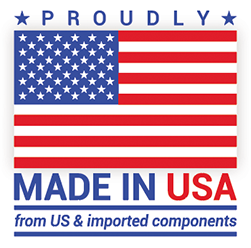
When corrosion becomes a problem in a fire protection system, it can be a challenge to determine the extent and severity of the damage. Because internal corrosion typically causes irreversible damage, fractional pipe replacement is almost always needed. In other words, a replacement of the affected pipe sections is usually required as a type of rehabilitation. Alternatively, a complete replacement of the entire pipe system may be required, or at least recommended. Depending on the extent of the corrosion and the scope of its affects throughout the system, a full replacement may make more sense.
What is corrosion and how does it occur?
Corrosion is a reaction that occurs when moisture and oxygen are present within the metal pipes. This is why using a supervisory gas such as nitrogen can be highly beneficial in maintaining a fire protection system (FPS). Nitrogen is a safe, inert gas that has a very low dew point, meaning it is much less likely to liquify or freeze, which can cause damage to the system.
How does corrosion damage FPS piping?
Corrosion weakens the metal piping in an FPS in two key ways: both the accumulation of corrosion deposits, as well as the degradation of the pipe wall compromises the integrity of the system. Both issues have been proven to negatively impact the hydraulic characteristics of the sprinkler pipes as well as dramatically lower the effectiveness and safety of the system’s performance overall.
Where is corrosion most likely to occur?
In most cases, the location of corrosion damage in both dry and preaction systems can be found in areas where trapped water has accumulated at improperly sloped sections. According to research and field experience conducted by CorrConsult, a corrosion and failure analysis company, corrosion damage is “…invariably confined to the larger diameter mains and cross-mains. These are oftentimes long pipe runs that were difficult to pitch properly at the time of installation.”
In wet sprinkler systems, however, CorrConsult reports that corrosion is typically located at high points along the sprinkler piping where pockets of air have become trapped. Trapped air eventually rises and accumulates at the highest points, creating an environment where air and water are in almost constant contact. As already mentioned, the presence of air, water and metal within the same space is a recipe for the corrosive reaction to take place.
Avoiding corrosion with Nitrogen gas
Corrosion can lead to costly repairs, replacements, and the threat of an improperly functioning system. To avoid corrosion, many facilities rely on nitrogen for their supervisory gas and rehabilitation. Nitrogen is a clean, inert gas that is much less likely to create an atmosphere where corrosion can take place. Due to its dry characteristics, it won’t condense into moisture, nor will it freeze. Unlike using compressed air, which has a higher dew point, Nitrogen is far less likely to liquefy, seep into tiny pinholes or cracks, freeze again, and further exasperate a problem that started out as a minor issue.
Using a Nitrogen Generator in FPS
Nitrogen generation technology has made it much easier and cost-efficient for facilities to maintain their fire protection systems. South-Tek Systems is a leading designer and engineer of nitrogen generators, offering a line of products specifically suited for fire protection systems. The N2-Blast – Corrosion Inhibiting System is designed for dry and preaction fire protection systems, producing 98%+ pure nitrogen and introducing it to the FPS. By doing so, oxygen and moisture are effectively displaced from the piping, inhibiting electrochemical, galvanic and microbiologically influenced corrosion (MIC), as well as freeze-ups and ice plugs.
If you are interested in learning more about South-Tek’s’ products, please visit SouthTekSystems.com or call (888) 526-6284.



 design works as a true water stop
design works as a true water stop